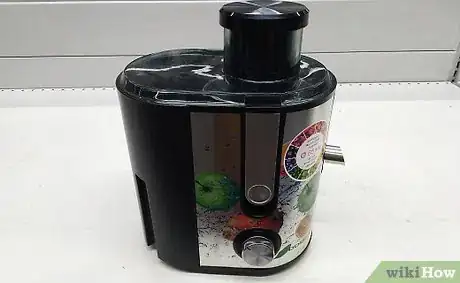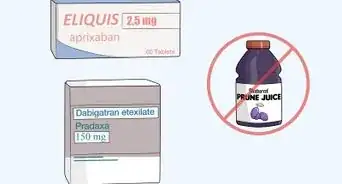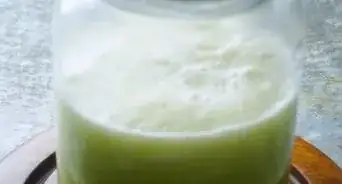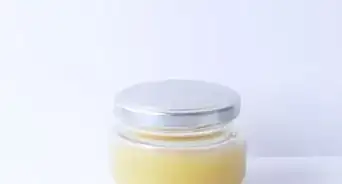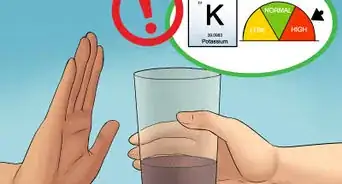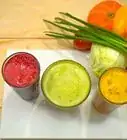This article was co-authored by Ollie George Cigliano. Ollie George Cigliano is a Private Chef, Food Educator, and Owner of Ollie George Cooks, based in Long Beach, California. With over 20 years of experience, she specializes in utilizing fresh, fun ingredients and mixing traditional and innovative cooking techniques. Ollie George holds a BA in Comparative Literature from The University of California, Berkeley, and a Nutrition and Healthy Living Certificate from eCornell University.
wikiHow marks an article as reader-approved once it receives enough positive feedback. This article received 12 testimonials and 100% of readers who voted found it helpful, earning it our reader-approved status.
This article has been viewed 1,416,867 times.
Carrot juice is a delicious and nutritious drink rich in beta carotene, vitamins A, B, C, D, E, and K, and minerals like calcium, phosphorous, and potassium. Carrots are great for your skin, hair, and nails, as well as your liver function, so making carrot juice at home is a smart way to give your whole body a boost.[1] Whether you're using a blender or food processor, or have a fancy juicer, this article will walk you through how to make your own carrot juice.
- Prep time: 20 minutes
- Cook time: 15-30 minutes
- Total time: 35-50 minutes
Steps
Making Carrot Juice with a Blender or Food Processor
-
1Clean your carrots. Wash 2 pounds (1 kg) of carrots (about 8) under cold running water. Scrub them with a vegetable brush if you can. Use a knife to cut off the broader end, where the carrot either was or still is attached to the green, leafy part of the plant.
-
2Cut the carrots into manageable pieces. Even if you have a high-quality blender or food processor, you don’t want to risk damaging your equipment by throwing four whole carrots in there. Cut your carrots into manageable chunks before breaking them down into a juice. Any food processor or blender should work fine with 1 to 2 inch (2.5 to 5.1 cm) chunks of carrot.Advertisement
-
3Puree the carrots. Place your cleaned, cut carrots in a blender or food processor. Process until finely chopped or mashed.
- Add a small amount of water if the carrots are not very moist, and need a little help breaking down.
- Note that a food processor will not puree the carrot as well as a blender will. It’s not that big of a problem, but use a blender if you have one available.[4]
-
4Mix with water. You want to thin out the taste of pure carrot a little by mixing the puree with water. This will both make it taste better, and also give you more juice. .
- Bring two cups of water to a boil.
- Mix the carrot puree and hot water in a large glass container.
- Stir to ensure an even spread of puree throughout the mixture.
-
5Let the mixture steep. One of water’s most incredible properties is how well it takes on nutrients and flavors when it’s hot. Just like tea, the longer you allow your carrot puree to steep in hot water, the better the juice will taste and serve your body nutritionally. Allow it stand for 15 to 30 minutes.
-
6Remove the pulp. Using a hand strainer, strain the juice into a 2 US-quart (2,000 ml) (2 L) pitcher.
- Using the base of a glass or other blunt object, press the mash to extract as much juice as possible from the strainer.
- If you want to strain out even more pulp, pour the resulting juice through a jelly strainer.
-
7Add orange juice. It's optional, but it's tasty!
-
8Adjust the blend. Depending on how rich you like your carrot juice, add additional water to taste.
-
9Serve immediately. Juice begins oxidizing and losing valuable nutrients immediately — especially if you’ve used a high-speed centrifugal juicer.[5] You should try to drink your juice as soon after making it as possible, either at room temperature or over ice — however you prefer it. However, if you must store it, refrigerate it for no more than 24 hours.
Using a Juicer
-
1Clean your carrots. Wash 2 pounds (1 kg) of carrots (about 8) under cold running water. Scrub them with a vegetable brush if you can. Use a knife to cut off the broader end, where the carrot either was or still is attached to the green, leafy part of the plant.
-
2Chop your carrots. If you have an industrial-strength juicer, this step may not be necessary. If not, chop your carrots into 2 or 3-inch chunks.
-
3Prepare your juice receptacle. Place a tall glass under the juice spout. Make sure it’s stable, so it won’t tip over when it fills up with juice, and make sure that it’s large enough to serve as a receptacle for the amount of juice you’re making.
- One pound of carrots will produce about a cup of juice.[8]
-
4Feed the carrots into the juicer. Drop the carrots or carrot chunks into the juicer, and push down on them with the juicer’s attachment to force them through the machine.
- Keep an eye on your glass. If your carrots are extra-juicy, you may end up with more juice than glass. Conversely, if your carrots are dried out, you may need to add more.
- The wider the funnel on your juicer, the faster you’ll be able to juice all your carrots.
-
5Serve immediately. Juice begins oxidizing and losing valuable nutrients immediately — especially if you’ve used a high-speed centrifugal juicer.[9] You should try to drink your juice as soon after making it as possible, either at room temperature or over ice — however you prefer it. However, if you must store it, refrigerate it for no more than 24 hours.
Community Q&A
-
QuestionCan I make carrot juice without a juicer?
 Community AnswerWell, you can puree boiled carrots in a blender, but you would have to strain it and may lose vital nutrients in the boiling.
Community AnswerWell, you can puree boiled carrots in a blender, but you would have to strain it and may lose vital nutrients in the boiling. -
QuestionCan lime juice and ginger be added to carrot juice?
 Community AnswerYes, this would add flavor and increase the nutritious properties.
Community AnswerYes, this would add flavor and increase the nutritious properties. -
QuestionShould I boil the carrots?
 Community AnswerNo.
Community AnswerNo.
Things You'll Need
- 2 pounds (1 kg) of carrots (about 8 carrots)
- Blender or food processor
- Juicer (optional)
- 8-cup measuring cup
- Strainer
- 2 oranges (optional)
References
- ↑ https://goaskalice.columbia.edu/answered-questions/nutritional-value-carrot-juice
- ↑ http://www.nytimes.com/2003/03/11/science/q-a-peels-and-vitamins.html
- ↑ http://www.healthambition.com/making-carrot-juice-better-health/
- ↑ http://www.eatingwell.com/blogs/healthy_cooking_blog/food_processor_vs_blender_which_is_the_better_kitchen_tool
- ↑ http://www.rawfoodlife.com/Products/Juicers/Juicing_FAQs/juicing_faqs.html#10
- ↑ http://www.nytimes.com/2003/03/11/science/q-a-peels-and-vitamins.html
- ↑ http://www.healthambition.com/making-carrot-juice-better-health/
- ↑ http://www.101cookbooks.com/archives/a-lesson-in-juicing-recipe.html
- ↑ http://www.rawfoodlife.com/Products/Juicers/Juicing_FAQs/juicing_faqs.html#10
About This Article
To make carrot juice, start by cutting some carrots up into bite-size pieces. Then, blend the small carrot pieces in a blender until they're finely chopped or mashed. Next, pour some hot water into the blender to thin out the carrot juice and then let it steep for 15-30 minutes. When the carrot juice is finished steeping, strain it into a pitcher and serve or store in the fridge for later! To learn how to make carrot juice with a juicer, scroll down!

